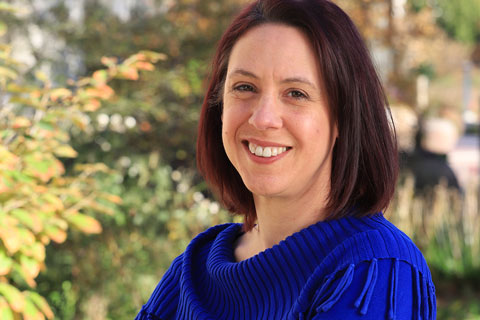11/1/2022
Sharing Is Caring
Jennifer Polanz

I am freshly back from the NCERA-101 meeting in Tucson that took place on the lovely campus of the University of Arizona. I was delighted to put faces to many of the names I correspond with via email and see often in the pages of our magazines.
There were some common threads that I noticed throughout the course of the two-day presentation schedule and the one that concerned the entire industry the most is the notion of sharing. Or, currently, the lack of sharing data that can help move the industry forward.
I’ve been covering the floriculture industry for nearly two decades and it’s one where growers are (mostly) happy to share information with each other in a “rising tide lifts all boats” point of view. In that industry, however, most operations are self-funded and generally not in competition for venture capital dollars, just customers. However, the commercial CEA industry is very different in that growers are being flooded with huge amounts of funding, sometimes upwards in the range of hundreds of millions of dollars, thereby making their growing efficiencies their leverage. So what’s the argument for sharing?
On the research side, it seems to be difficult to fully understand where the most need is—what are the areas where researchers can best help growers gain more efficiencies? And most importantly, what are the end goals, or top end, of that efficiency? More than one researcher presenting at the meeting noted the lack of transparency among CEA operators in trying to determine certain metrics, instead using models on which to base their research.
On the policy side, Nadia Sabeh (AKA Dr. Greenhouse), an engineer and designer/installer of HVAC equipment for CEA operations, gave a pointed warning. There’s the potential for more regulation for CEA growers, and if policy makers don’t have a good idea of what the common industry metrics are, they could regulate based on cutting-edge techniques versus industry-standard techniques.
A few of the growers who spoke at the event seemed to hear that message and said they foresee more data being shared in the future. It could be through specific partnerships with universities, however, so proprietary information is still protected.
One thing you won’t find in these pages is proprietary information. Our goal is to help further the growing CEA industry with more solid information about how to expand and improve your growing operations.
This month you’ll find more details from the NCERA-101 meeting, including short descriptions of the research presented, a few products I learned about and a quick trip through the Biosphere 2 (a fascinating place). Turn to page 10 to read all about it. And on page 14, some of your favorite university researchers continue their quest in answering frequently asked questions about CEA production.
Then you can hear more from Nadia as she gave freelancer David Kuack the rundown on the importance of vapor pressure deficit (VPD), a topic near and dear to her heart. That’s on page 16.
We have two stories on cannabis this month: first, Dr. David Hawley of Fluence provides a detailed analysis of photobleaching in cannabis on page 20, and second, we continue to run excerpts from Dr. Brian Corr’s cannabis chapter in the Ball Redbook, this time on cannabis pests (page 22).
If your company is interested in sharing information with me, I’m always happy to get the word out to the greater industry at large, and I’m always available at jpolanz@ballpublishing.com. IG